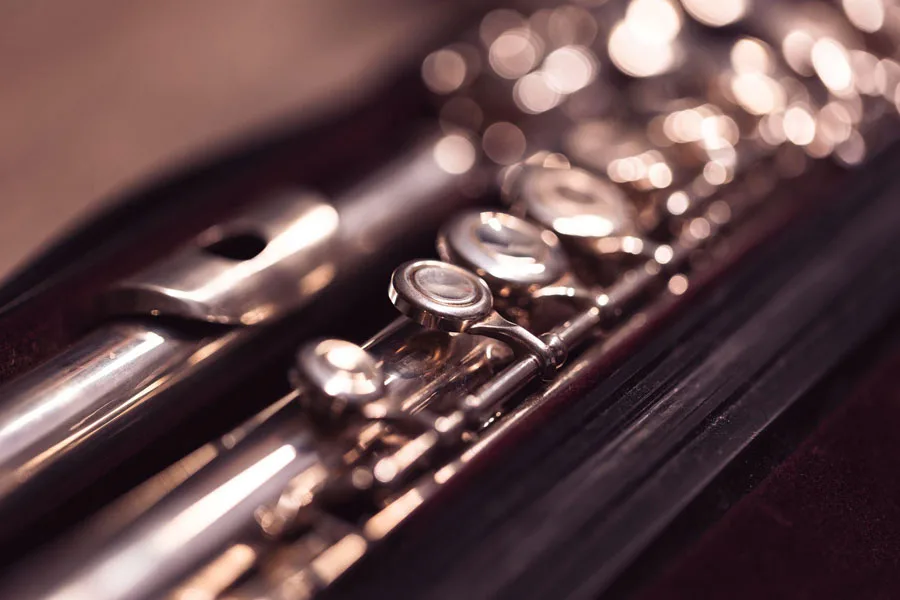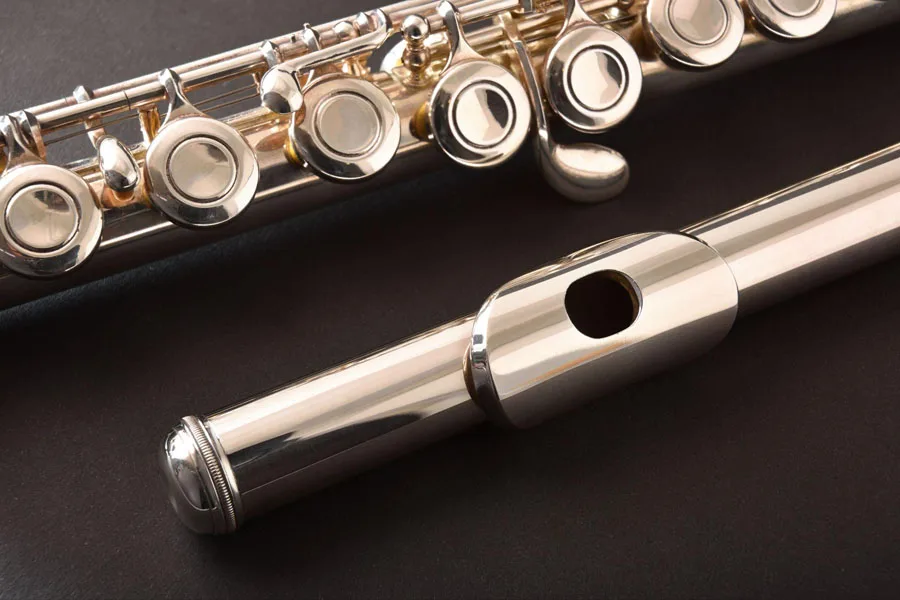Table of Contents
– Introduction
– Flute Market Landscape
– Crucial Elements for Flute Selection
– 2024’s Premier Flute Choices
– Conclusion
Introduction
Choosing the right flute is a critical investment for any ensemble or educational institution, as it significantly influences the quality of performances and the development of musicians, from novices to experts. In this detailed guide, we explore the complexities of the flute market, outline key factors to consider when selecting the most suitable flute, and highlight the leading models of 2024. Our goal is to equip business buyers with the necessary knowledge to make a well-informed purchase that enhances the musical capabilities and enthusiasm of their performers. This strategic approach ensures optimal instrument selection and fosters a higher level of engagement and achievement in musical endeavors.
Flute Market Landscape
The global flute market has witnessed steady growth in recent years, driven by the increasing popularity of music education and the rise of digital platforms that have made learning and performing more accessible. In 2023, the market size reached USD 550 million, with a projected compound annual growth rate (CAGR) of 4.2% from 2024 to 2030. North America and Europe dominate the market, accounting for 65% of the global share, while Asia-Pacific emerges as a rapidly growing region. The demand for high-quality flutes continues to rise as musicians seek instruments that deliver exceptional sound, durability, and playability.

Crucial Elements for Flute Selection
Material: The Foundation of Sound
The material of a flute is the bedrock upon which its tonal qualities are built, playing a pivotal role in determining the instrument’s sound signature and overall performance. Flutes are meticulously crafted from a range of metals, each with its unique properties that contribute to the final aural output. Nickel silver, a versatile alloy composed of copper, nickel, and zinc, is a staple in the student and intermediate flute market. Its durability and cost-effectiveness make it an attractive choice for those embarking on their musical journey, providing a reliable instrument that can withstand the rigors of daily practice.
As players progress in their skills and seek a more sophisticated sound, sterling silver flutes enter the picture. With a composition of 92.5% silver, these instruments offer a warmer, more expansive tone that resonates with emotional depth. The increased silver content imbues the flute with a rich timbre that is highly responsive to the player’s nuances, allowing for greater expressive control. For the most discerning musicians, gold flutes represent the pinnacle of tonal brilliance. These premium instruments, crafted from either 14K or 18K gold, deliver a radiant, projecting sound that fills concert halls with its luminous presence. The enhanced resonance of gold flutes creates a harmonically complex tone that is both powerful and refined, making them the choice of top professionals.

When curating your flute selection, it is essential to consider your target customers’ skill levels, budgetary constraints, and tonal preferences. For businesses catering to beginners and music education programs, offering a range of nickel silver flutes from reputable brands ensures that students have access to quality instruments that will support their growth. As your clientele advances, incorporating sterling silver and gold flutes into your inventory will attract experienced players seeking a more nuanced and expressive sound.
Headjoint: The Voice of the Flute
The headjoint is the most critical component of a flute, as it significantly influences the instrument’s sound and responsiveness. Headjoints come in various styles, each offering distinct tonal characteristics. The most common headjoint styles are:
1. Standard: A versatile option suitable for most playing styles and genres.
2. Wave: Features a wavy lip plate that enhances projection and clarity.
3. Heavy Wall: Thicker wall construction provides a darker, more focused sound.
When choosing a headjoint, let the players try different styles and materials to find the one that best suits your playing style and tonal preferences. Many flutists invest in multiple headjoints to achieve different sounds for various musical contexts.

Key System: Open or Closed Holes
Flutes are available with either open or closed hole keys. Open hole flutes, also known as French model flutes, have perforated keys that require the player to cover the holes completely with their fingers. This design allows for greater control over intonation and facilitates advanced techniques such as quarter tones and multiphonics. Closed hole flutes, or plateau model flutes, have solid keys that are easier to play, making them ideal for beginners and those with smaller hands.
Consider different people’s playing style, repertoire, and skill level when deciding between open and closed hole flutes. While open hole flutes offer more flexibility, they may require a period of adaptation for players transitioning from closed hole instruments.

Footjoint: Extending the Range
The footjoint of a flute determines the instrument’s lowest notes. Most student and intermediate flutes come with a C footjoint, which allows the player to reach the low C. However, some advanced flutes feature a B footjoint, extending the range down to low B. The additional length and key work of a B footjoint can affect the instrument’s balance and weight.
Evaluate the repertoire and playing requirements when considering a B footjoint. While it may be necessary for certain advanced pieces, a C footjoint is sufficient for most standard repertoire.
Ergonomics and Comfort
The ergonomics and comfort of a flute are essential factors to consider, especially for players who practice for extended periods. Look for flutes with ergonomically designed keys, comfortable hand positions, and balanced weight distribution. Some flutes feature curved headjoints or adjustable thumb rests to accommodate different hand sizes and playing postures.
When trying out flutes, make sure the customers pay attention to how the instrument feels in the hands. A comfortable, well-balanced flute will allow the user to focus on the playing technique and musical expression without undue strain or fatigue.
2024’s Premier Flute Choices
When selecting a flute for your business, it’s essential to consider the level of the player, the desired sound quality, and the instrument’s overall value. Here are some top flute picks for 2024, each with unique features that cater to different skill levels and playing styles:
For advanced players seeking a professional-level instrument, the Azumi AZ3 Series is an excellent choice. Designed in collaboration with Altus, a renowned Japanese flute maker, the AZ3 features a hand-cut, solid silver Altus Z-Cut headjoint and a solid silver body. This combination delivers a rich, dark tone with exceptional consistency across all registers. The AZ3 also boasts French-style pointed key arms for quick, responsive action and is available with an offset G key and optional split-E mechanism for enhanced playability.

Another top pick for professional players is the Pearl Quantz 765 Series. This flute pays homage to the legendary Baroque composer and flutist Johann Joachim Quantz, known for his rich flute compositions. The Quantz 765 features a sterling silver headjoint, body, and footjoint, along with silver-plated keys and French pointed arms. The unique Quantz wall design gives the flute a dark, rich sound, particularly in the lower register. Pearl’s patented pinless construction ensures smooth, reliable key action.
For intermediate players, the Gemeinhardt 3SHB is a popular choice. This flute pairs a sterling silver headjoint with a silver-plated body, mechanism, and B footjoint. The French-style open hole keys facilitate the development of advanced techniques, while the offset G key option (3OSHB) caters to modern playing preferences. The Gemeinhardt 3SHB is known for its ease of response, articulation, and the ability to create desired tones and colors.
When selecting flutes for your business, consider the following scenarios:
1. For music schools or programs focusing on advanced students, investing in professional-level flutes like the Azumi AZ3 Series or Pearl Quantz 765 Series will provide instruments that can grow with the players as they develop their skills.
2. If your business caters to a wide range of skill levels, offering intermediate options like the Gemeinhardt 3SHB alongside professional models will ensure that you can meet the needs of a diverse customer base.
3. For businesses with budget constraints, selecting flutes with silver-plated bodies and sterling silver headjoints, such as the Gemeinhardt 3SHB, can provide excellent value without compromising sound quality.

Conclusion
Choosing the perfect flute is a personal journey that requires careful consideration of individuals’ playing style, skill level, and musical aspirations. By understanding the key factors that influence a flute’s sound and performance, buyers can make an informed decision that will elevate their musical experience. Embrace the joy of flute playing and let the musical expression soar in 2024 and beyond.
Don’t forget to click the “Subscribe” button to stay updated with more articles that align with your business needs and interests on the Chovm Reads sports blog.





 বাংলা
বাংলা Nederlands
Nederlands English
English Français
Français Deutsch
Deutsch हिन्दी
हिन्दी Bahasa Indonesia
Bahasa Indonesia Italiano
Italiano 日本語
日本語 한국어
한국어 Bahasa Melayu
Bahasa Melayu മലയാളം
മലയാളം پښتو
پښتو فارسی
فارسی Polski
Polski Português
Português Русский
Русский Español
Español Kiswahili
Kiswahili ไทย
ไทย Türkçe
Türkçe اردو
اردو Tiếng Việt
Tiếng Việt isiXhosa
isiXhosa Zulu
Zulu